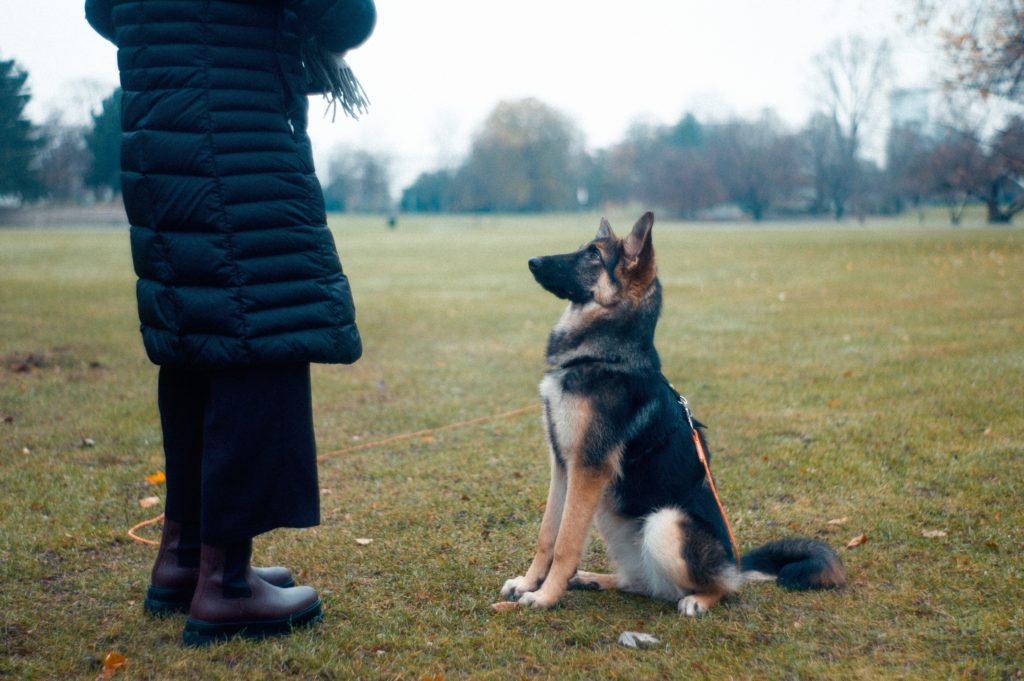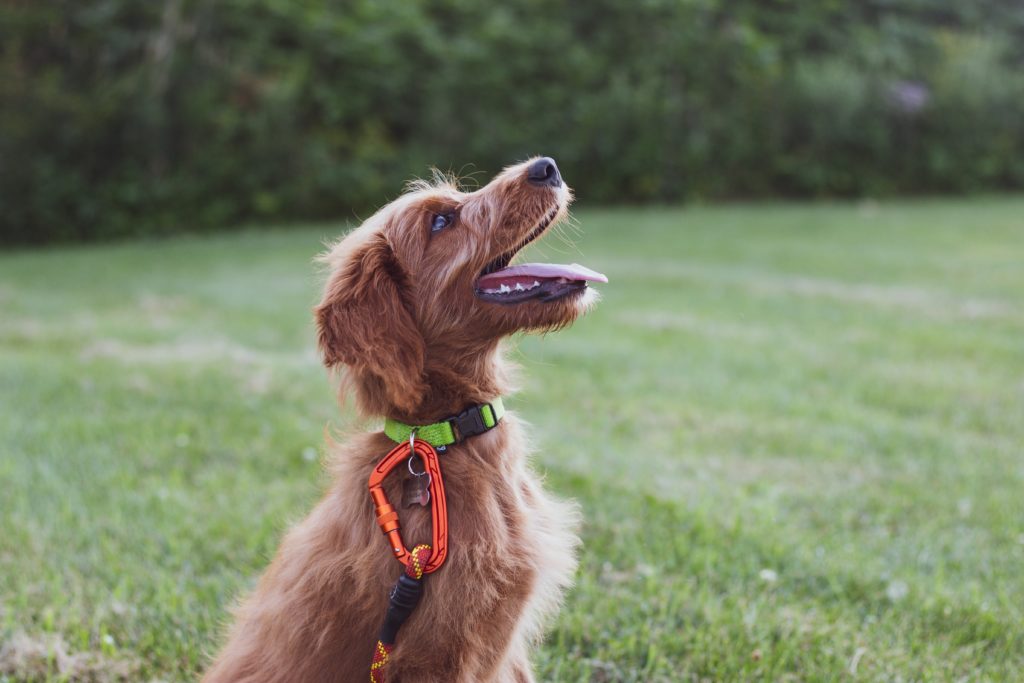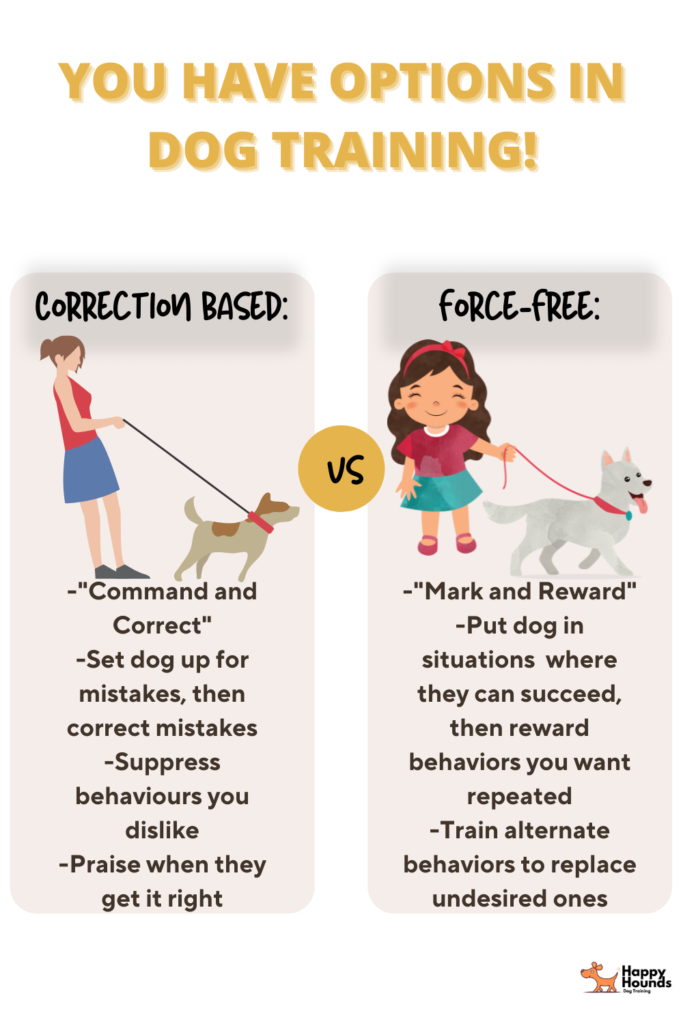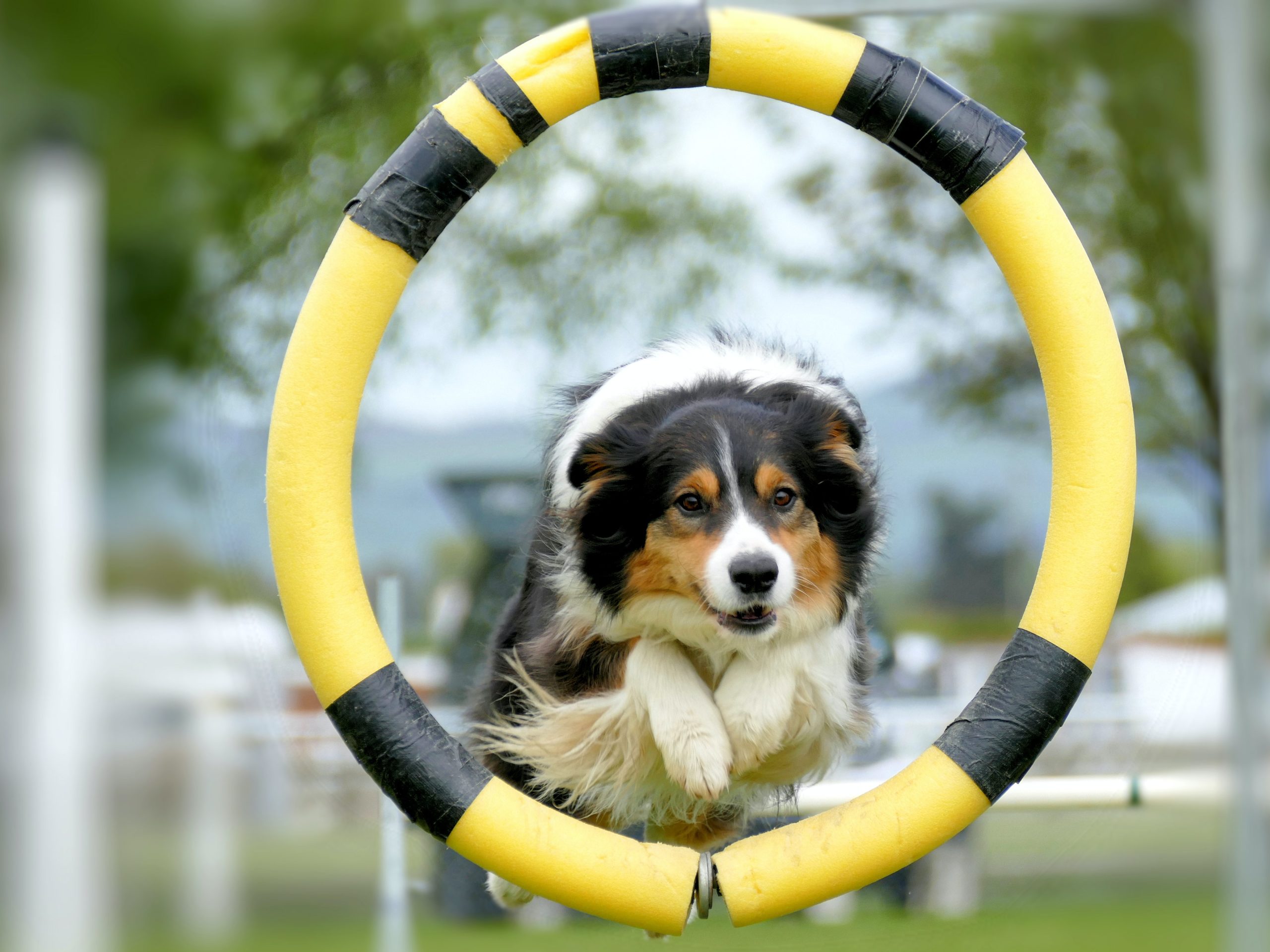Force-free (or positive-reinforcement) dog training is taking over the industry. There was even an article in Time titled “How Science is Revolutionizing the World of Dog Training”. It’s easy to understand why! People love their dogs, dominance theory or “being the pack leader” has been debunked, and we’re finally moving towards better treatment of animals. Does any of that matter though if this “new age” dog training fails? Why doesn’t force-free dog training work?
Click HERE to watch on Youtube!
Why doesn’t force-free dog training work?
Confession time: I’m a force-free dog trainer! I can assure you that I have high expectations for dog obedience and I achieve those with positive reinforcement training. It DOES work.
So what’s with the title of this article?
I’ve seen a lot of posts online (mostly from balanced/correction-based trainers) stating that force-free dog training does not work.
Why would they say that?
Honestly, it’s probably true for how they’re trying to use it!
Force-free dog training will NOT work if you approach it the same way you do correction-based training. You cannot simply substitute rewards for punishment but otherwise use them the same way.
Why?
At base level the concepts might sound similar.
Positive-reinforcement training rewards behaviours we like so that they’re more likely to occur again. Balanced or correction-based training punishes behaviours we do not like so that they happen less frequently.
They sound similar, but they aren’t.
Even balanced trainers will typically use positive-reinforcement for the “easy stuff”, but then claim it does not work for higher level skills or behavioural modification.

Let’s look at an example!
Let’s say I put you in a quiet room by yourself and asked you to say your ABC’s (an easy task). I then told you one of two things:
- You’d get an amazing donut for saying them correctly (positive reinforcement)
- I was going to slap you if you said them incorrectly (correction-based)
Both would likely make you say your ABC’s! Only one of them makes you want to work with me again however…
Therefore, for the “lower level” stuff positive reinforcement training is easily the right method. That’s why both styles of dog trainers (balanced and force-free) use it.
What if you’re asking for MUCH more difficult skills though?
Here’s an example of why a balanced trainer might claim positive reinforcement training does not work for more difficult tasks:
For this scenario, you’re instead put on a stage in front of 5000 people and asked to say your ABC’s into the microphone.
You’ve never done public speaking before, so you mentally freeze. Panic washes over you.
The balanced trainer then waves the worlds best donut in front of your face to motivate you.
However, you’re so stressed that you have no appetite. The donut does not motivate you at all. You don’t even want it.
Aha! Positive-reinforcement training doesn’t work!
The balanced trainer claims as much, then straps a shock collar to you. They increase the pain level of the shocks until you finally comply and say your ABC’s to make the pain stop.
“See” they say. Positive-reinforcement failed where correction-based training worked!
Did positive reinforcement fail though? Really?
NO! The trainer failed!!
Instead of training in a fair setting and progressing the difficulty, they’re starting with the most difficult setting and trying to train.
This is backwards and NOT how force-free trainers train.
Let me ask you a very silly question.
If you held a vacuum upside down while using it, would it clean your floors?
Obviously not. You’re using it backwards!
Nobody would fault the vacuum. Instead, it’s clearly the users mistake.
The above ABC’s example is no different. Yet this is exactly what I commonly see in videos when balanced trainers are claiming that positive reinforcement failed.
It’s unfair to claim that force-free training does not work if it’s being used backwards! You shouldn’t expect it to work when it’s used incorrectly! Remember the vacuum?
Force-free dog trainers do not put dogs in situations so beyond their abilities that they cannot reasonably do what is asked. Balanced trainers do, then they punish dogs when reinforcement “fails”. Does that seem fair?

How would a force-free trainer get you to say your ABC’s in front of 5000 people then?
We would start where you can perform. Maybe that’s just in front of your mirror. Maybe you’re ready to say the ABC’s out loud to your family. We’d start at your current ability level so that there IS something we can reward!
Very, very slowly we’d then increase the audience size being careful to do it at a pace that doesn’t cause unnecessary anxiety for you. We’d work at your speed. Every time you said your ABC’s to an audience we’d make sure you were well compensated and had a positive time. It would be enjoyable enough that you would WANT to keep practicing and growing the audience.
Eventually you could successfully say your ABC’s in front of those 5000 people without crippling stress. Even better? You’d be so conditioned for it that afterwards you’d be willing to do it again. And again!
If your experience had instead been the “balanced” punishment one, would you willingly get back onto that stage?
This is why force-free dog training is better in the long run.
It’s not simply about making you do a task once. It’s about building positive feelings around it so that you’re happy to repeat it over and over.
The downside?
It’s going to take time to reach that.
Positive-reinforcement training does not work if you throw an animal into an unfair situation and hope that bribing them with treats will motivate them to work. Therefore good force-free trainers don’t do that!
So, why doesn’t force-free training work?
Because it isn’t used properly.
Just like an upside down vacuum, you cannot fault a method when it’s being used incorrectly.
You cannot put a reactive dog in a situation above their threshold and think that treats will keep them calm.
You cannot walk a dog with limited leash skills down a busy street and cross your fingers that treats will make them heel.
That isn’t proper force-free training!

Four things required for positive-reinforcement training to work:
1. Progression that matches the learner:
You cannot put your dog in an unfair situation and then try to bribe/calm them with food. That will fail.
Every dog is going to learn or progress at a different speed. It’s impossible to give one size fits all advice for dog training because a lot of it depends on that individual dog.
Think back to the ABC’s example. If you are naturally more extroverted than I am, you’ll likely progress to saying your ABC’s in front of those 5000 people quicker than I will.
If I tried to match your progression pace I’d be so anxious it would not work. However, if you progressed at my pace you’d likely be held back and bored.
You have to look at the dog in front of you and match your asks to their current abilities.
That leads to the next requirement for force-free training to be successful:
2. An understanding of canine behaviour, body language, and thresholds:
In the ABC’s example it would be easy to determine when I was ready for the next level.
Why?
I could tell you! With words!
Dogs communicate with us too. Most people just do not know how to recognize and understand what they’re saying (or they ignore it).
If you’re unable to read signs of stress, fear, or aggression in dogs you’re not going to be able to use positive reinforcement or force-free training for difficult tasks or behavioural change.
For this reason I suggest working with a force-free trainer who can help you see these in YOUR dog.
Being able to understand what your dog is telling you is crucial for knowing when it’s ok to progress your asks versus when you need to back off or leave that situation.
3. Proper reward timing:
Let’s use another silly example.
Let’s pretend that as part of the motivation for saying your ABC’s, I gave you $1000 for completion. I never TOLD you that’s why you were getting the money though.
In one scenario, about a week after you’d said them I gave you your $1000. It just seems like a random gift to you out of the blue.
In another scenario, I paid you the second you finished saying your ABC’s.
In which scenario would you be faster to figure out “Hmmm… the ABC’s are why I’m getting the $1000! I should say them again!”.
Dogs are no different. Reinforcement works, but you need to make sure you’re clearly rewarding the right thing!
Let’s use teaching a dog to sit as an example.
If you reward the exact second your dog touches their butt to the ground they’ll associate the reward with the behaviour. If you instead gave them a treat 30 seconds after they’d sat and already gotten back up the dog will not understand that the treat was for sitting.
You only have a couple seconds for a dog to associate the behavior with the reward.
Incorrect reward timing will make positive reinforcement ineffective.
Make sure you use either a clicker or marker word!
4. Patience:
If you’ve read this far, you can understand that force-free training takes time.
You need to work the dog in front of you, at their ability, on that particular day.
Force-free training takes longer because we care about how the dog is feeling as it’s trained.
We’re teaching what we WANT, rather than simply punishing “mistakes”. We aren’t suppressing feelings, we’re CHANGING them.
Yes, the title of this article was a bit of click-bait.
Why doesn’t force-free dog training work?
It does. But just like a vacuum, you have to use it correctly. Otherwise you cannot fault it for being ineffective.
It requires skill rather than force.
I believe humane training is worth the extra time and effort.
I hope you feel the same for your dog!
Happy training 🙂

Disclosure: Happy Hounds uses affiliate links. Purchasing with these links will not cost you any extra, but I get commissions for purchases made through these links. Affiliate links help me to continue to offer free resources & blog posts. I would love if you used them!


Bravo! You better keep doing these important and necessary blog posts… Or else!
Hahaha at first I was like “That’s oddly aggressive…”, then I realized who wrote it 😛
Im very pleased to find this site. I need to to thank you for ones time for this particularly fantastic read!! I definitely really liked every part of it and I have you bookmarked to see new information on your site.
Thank you so much for the kind words! 🙂